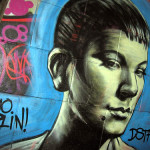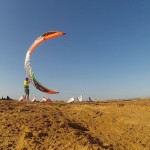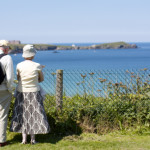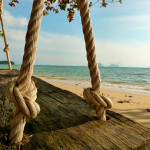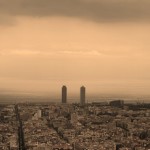Cool hotels, stylish bars and endless beaches, Rimini just got its mojo back.
Film director, Federico Fellini, and his iconic films, such as La Strada, 8 ½ and La Dolce Vita, are shorthand for cool and sexy, but his birthplace of Rimini was once considered a little down-at-heel; harsher critics described it as the ‘Southend of Italy’ – all funfairs, cheap tat and beaches packed full of holidayers who, in spite of every health warning, still consider that it’s not a holiday unless your extremities are pink and peeling.

Hip Rimini
It’s true that some residual disappointment from my last visit could have coloured my opinion too – that was when I was nine and ¾ and thought that the ratio of ice cream available to ice cream consumed (about 20:1, as I recall) was a poor one. But to be fair, that wasn’t Rimini’s fault… and fortunately this time I made my return with Emilia Romagna’s amazing Blogville project and was given an opportunity to really explore this great town. I was totally wowed by just how hip it is. Where to start…

über cool places to stay
Thanks to Blogville, a group of us were staying in Piccadilly Residences with a fabulous view of serried rows of multi-coloured beach umbrellas all the way to the sea. The location is perfect and the accommodation simple, but for lovers of luxury, there are a host of über cool places to stay. First up is the Duomo, the first hotel designed by stylemeister Ron Arad, opened in 2008, which was swiftly followed by the gorgeous Hotel Rimini i suites in 2009. The classic art nouveau Grand Hotel, all white and turreted, was Fellini’s choice and it’s possible to spend the night in his favourite suite as well as book a dinner based on the Fellini menu. But if you’re on a budget and just want a place to flop, there are over 1,100 hotels here so you’re sure to find something to fit the bill.

How about the beaches?
And how do the beaches compare? Well, there are 15 kilometres of them for starters, with over 200 bathing establishments, each designated by different coloured umbrellas. The sea is warm, the water quality tightly controlled, the sandy beaches are clean and safe, and everything – sports activities, showers, changing rooms, even yoga and t’ai chi classes – is included in the price of your umbrella and sun lounger. And then, as we visited in June, we had around ten hours of blazing sunshine to go with it… beat that, Southend!
On the strip below our hotel there was the odd shop selling the sort of stuff you’ll find on any seafront – inflatables, beach balls, spades – but they’re far outnumbered by decent eateries, interesting craft shops and a host of hip bars, which brings me neatly to nightlife.

House Mojito at Bar Rumba
On our first evening foray we walked straight into what looked like an impromptu street party – hordes of young things hanging out at Hobo’s, a cocktail bar open straight onto the street: the music was loud, the look was cool and the mojitos strong. And what a friendly bunch! We hooked up with some locals who took us to nearby Bar Rumba – another outdoor bar – where the barman insisted we try the house mojito with a passion fruit twist. It could have been the twist, the buzz, the company or the second cocktail, but we lost track of time and didn’t head home until the early hours, passing plenty more places that could have kept us up until morning. Nightlife, check.

A bit of Roman history
The next day, I was determined to investigate the cultural side of the city. The historical centre is compact and easy to navigate with little traffic and a surprising number of bikes ridden by the very young to the unfeasibly old. Rimini has an unexpectedly rich past as it was a Roman city officially founded in 268 BC. The city took its name from the colony, which was called Ariminum after the original name of the River Marecchia (Ariminus). There are still plenty of signs of Roman presence here, including the Bridge of Tiberius, built over 2,000 years ago, which lies on the ancient via Emilia that continues on for another 1,000 km to Piacenza, and the Arch of Augustus – the oldest of all Roman triumphal arches – on the via Flaminia which continues to Rome. There is even a perfectly preserved Roman doctor’s surgery, the only one in existence, that was opened to the public in 2007.
The Renaissance
Rimini also had a significant Renaissance period with it’s own artistic school, and some of the school’s frescoes were recently discovered in the Church of St Augustine in via Cairoli; following an earthquake, a portrait believed to be of Dante was revealed beneath some 18th-century frescoes, giving a clue to their true date. Another of the city’s masterpieces is the Malatesta Temple, built by Sigismondo Pandolfo as a mausoleum for himself and his beloved wife Isotta. Inside you’ll find masterpieces by Giotto and Piero della Francesca.

Quieter pace of life
On nearby via Pescheria, the slabs from the original 18th fish market are used to sell flowers from. The fishermen who once inhabited the San Guiliano area are long gone, and this same area where Fellini once enjoyed kicking a tin can about is now a much-desired part of town where a wander along cobbled streets, admiring pretty pastel coloured houses, will give you a taste of a quieter pace of life that can still be found here.

And for all the culture, Rimini is still heaven for kids – endless sandy beaches, a huge range of summer activities and entertainers, even cartoon festivals. And enough ice cream to make even a grown-up kid smile…
If you liked my post, why not let me know? Contact me.

